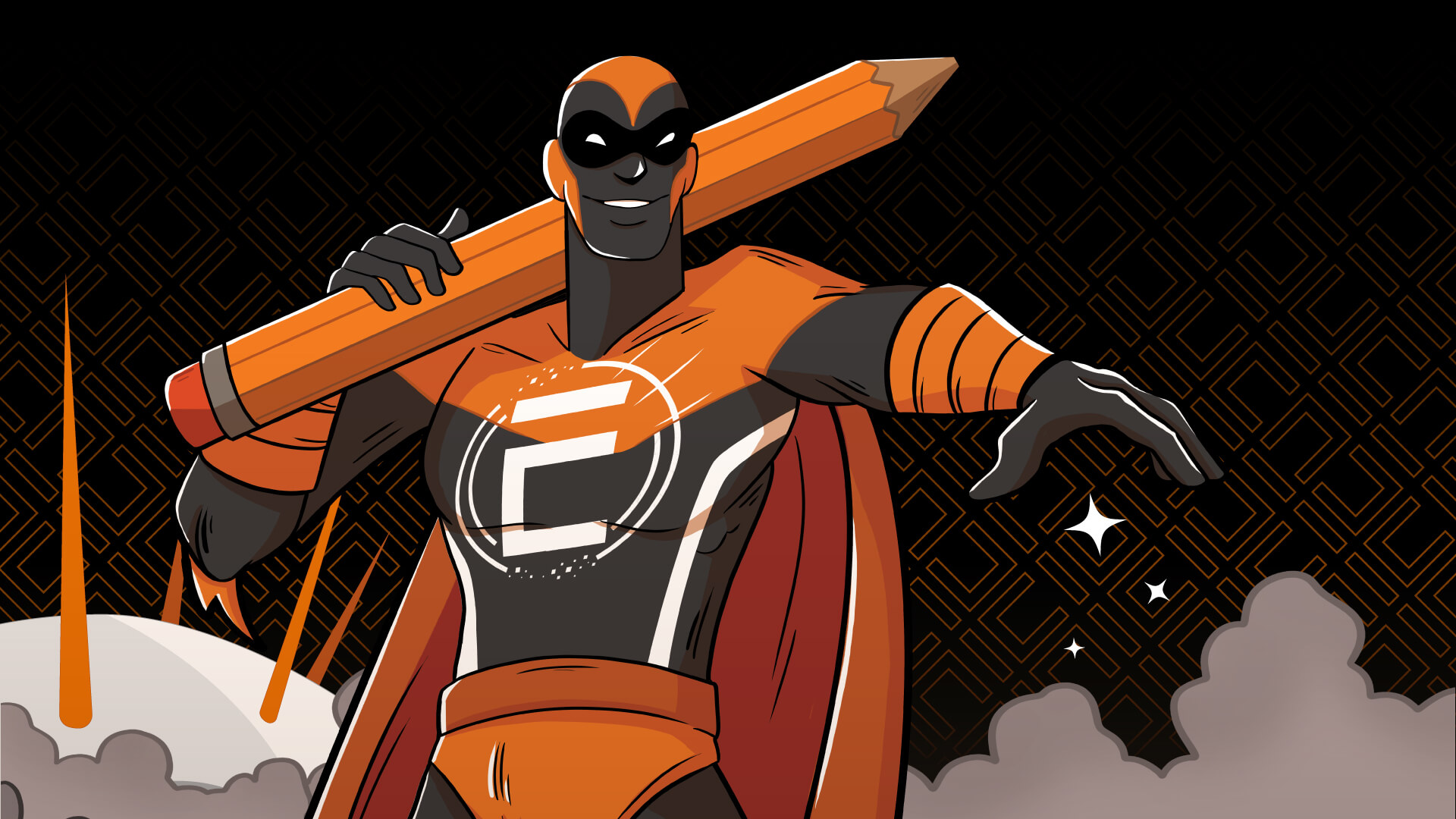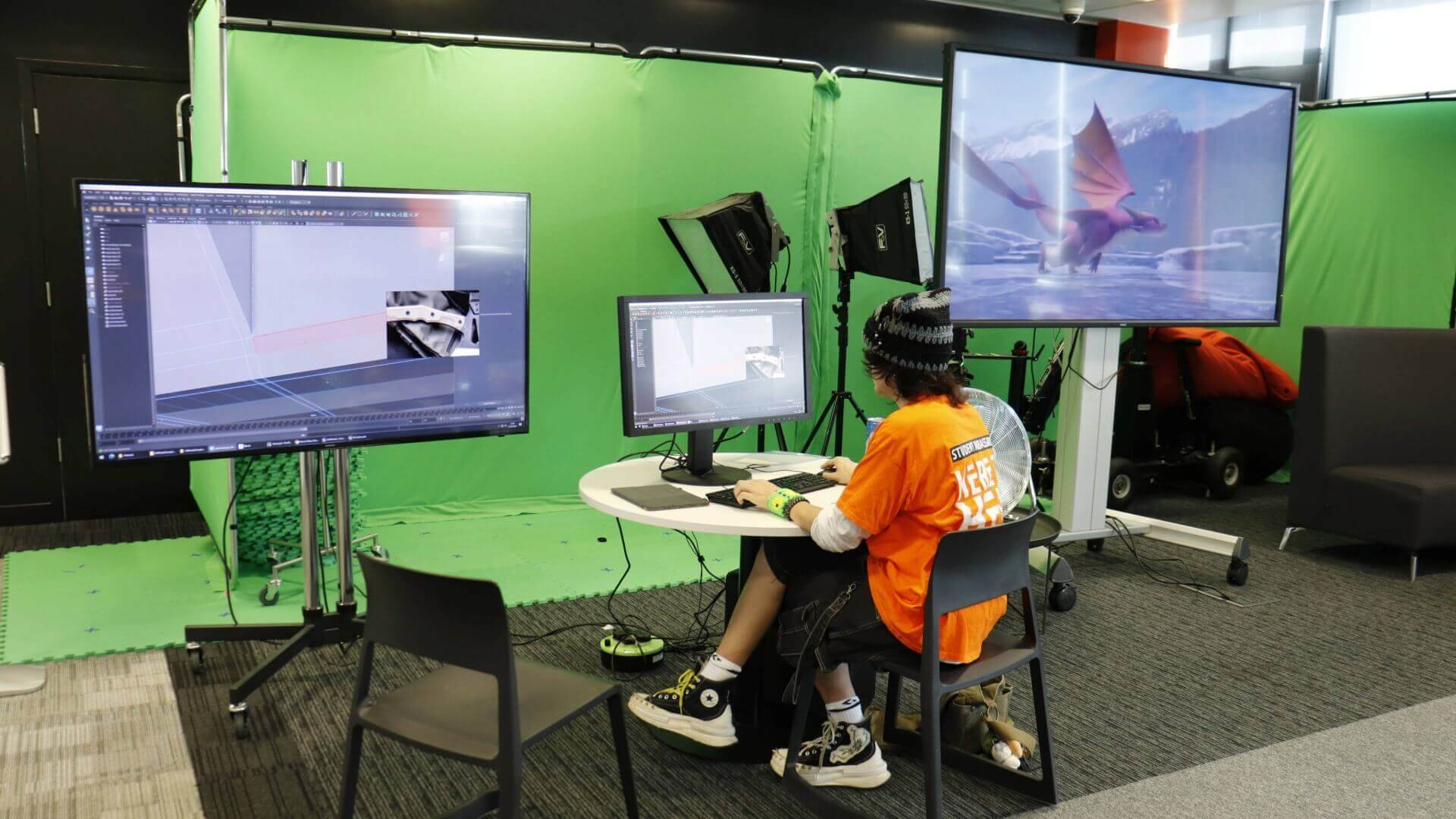news • 16 October 2025
Animation portfolio tips for students

When applying to courses in animation, or aiming to secure internships and jobs, – your portfolio is one of your most important tools. It’s not just a showcase of your skills, but also a reflection of your creativity, technical ability, and potential as a future Animator. Knowing what to include (and what to avoid) can make all the difference.
Here, we break down top content ideas for an animation student portfolio, share practical animation portfolio tips to make your work stand out, and point you towards resources to help you put your best foot forward.
WHY YOUR ANIMATION PORTFOLIO MATTERS
A strong portfolio goes far beyond simply collecting your favourite pieces of work. It’s your chance to prove you understand the principles of animation and are developing into an artist who can contribute meaningfully to the industry. Whether you’re applying to study animation or aiming for internships, admissions, tutors and employers use your portfolio as one of the clearest indicators of your potential.
They’ll be looking to evaluate four main areas:
- Technical skills - can you show strong drawing ability, design thinking, or mastery of animation fundamentals?
- Creativity - do your ideas demonstrate originality, imagination, and flair?
- Progress - does your work reveal growth, experimentation, and refinement over time?
- Professionalism - is the portfolio well-presented, clear, and thoughtfully structured?
Your portfolio should strike a balance between skill and storytelling - the two pillars of great animation.
1. DRAWING SKILLS
Drawing is the foundation of animation, and it’s often the very first thing reviewers look for. Even if you plan to specialise in 3D animation, a strong grasp of drawing shows that you understand movement, proportion, and design fundamentals. Think of this section as your chance to prove that you can observe the world around you and translate it into dynamic, believable forms.
Good things to include:
- Life drawings (human figures in different poses and movements).
- Observational sketches (people, animals, environments).
- Gesture drawings to capture energy and motion.
Tip: Animation begins with observation. Show you can capture form, flow, and movement quickly and confidently.
2. CHARACTER DESIGN
Animation thrives on memorable, engaging characters. Your portfolio should not only demonstrate your ability to design figures but also your talent in giving them life and personality. Strong character design shows you can think beyond appearance - considering traits, emotions, and backstories that make a character feel real and relatable.
You could showcase:
- Character turnaround sheets (front, side, back views).
- Expressions and dynamic poses.
- Style variations to highlight your versatility.
Tip: Don’t just design characters - give them personalities, emotions, and stories. Let your drawings suggest who they are before they say a word.
3. STORYBOARDS AND VISUAL NARRATIVES
At its heart, animation is visual storytelling. Storyboards and narrative pieces demonstrate that you can plan a sequence, think about pacing, and use framing to guide an audience through an emotional journey. This work should illustrate how well you communicate ideas visually, whether through humour, drama, or action.
Consider adding:
- Short storyboard sequences.
- Animatics (if you have them).
- Visuals that convey pacing, rhythm, and emotion.
Tip: Storytelling isn’t only about dialogue. Through framing and timing, show how you can communicate mood, tension, and humour visually.
4. ANIMATION SAMPLES
If you’ve already experimented with movement, this section is where you can really bring your work to life. Animation samples are the clearest evidence that you understand timing, weight, and performance. They don’t need to be long or complex, as short, focused clips often make the strongest impression.
You could include:
- Walk cycles, lip syncs, or action tests.
- 2D or 3D animation pieces, depending on your focus.
- A concise showreel (around one to two minutes in length).
Tip: Keep your reel polished and short. Admissions, tutors and recruiters prefer quality over quantity, so leave them impressed, not overwhelmed.
5. ENVIRONMENT AND PROP DESIGN
Characters may drive stories, but environments create the worlds they inhabit. By showcasing backgrounds, props, and settings, you demonstrate your ability to think about atmosphere and visual storytelling on a broader scale. These pieces reveal your sense of perspective, composition, and how you make environments feel authentic and immersive.
You can show your ability with:
- Background art and landscapes.
- Prop or object designs.
- Perspective studies to show depth and structure.
Tip: Even fantastical worlds should feel lived in. Use detail to make your environments engaging and immersive.
6. SHOW YOUR PROCESS
Finally, don’t forget to share the journey behind your finished pieces. Tutors in particular want to understand how you think, not just what you can produce. Showing your process highlights your ability to brainstorm, experiment, and refine ideas - a critical part of any creative profession.
You can add:
- Sketchbook pages with thumbnails and variations.
- Development sketches showing how your ideas evolved.
- Notes or annotations explaining your choices.
Tip: Your creative journey matters. Show you can explore, problem-solve, and refine, not just present a finished product.
PORTFOLIO PRESENTATION TIPS
Even the strongest artwork can fall flat if it’s not presented well. Think carefully about how you organise and edit your portfolio, as great presentation shows professionalism and respect for your audience’s time. A well-structured, easy-to-navigate portfolio demonstrates clarity and confidence, two traits that matter just as much as your technical skill.
To show your work at its best:
- Keep it concise - a few strong pieces are better than many ‘so so’ ones.
- Organise logically - group similar work together (for example, life drawing, character design).
- Tailor to your audience - tutors will want to see development work, while employers are likely to focus on finished, polished pieces.
- Update regularly - replace old work with stronger, more relevant examples.
- Go digital - most employers and instutions now prefer online submissions, for instance via a PDF or your own portfolio website.
Tip: If you create a website, keep navigation simple and make sure videos are easy to play. A clean, professional layout ensures the work speaks for itself.
EXTRA RESOURCES
Creating your first portfolio can feel daunting, but we have plenty of resources and events you can take advantage of to get some more help and advice.
Guides:
Events:
- Undergraduate open events - Saturday 25th October, Wednesday 6th November, Saturday 22nd November 2025.
- Postgraduate open evening - Thursday 27th November 2025.
- Power Up Your Portfolio webinar - Thursday 30th October 2025.
At Escape Studios, we help students refine their animation student portfolios and develop the industry-ready skills needed to succeed. Explore our animation courses to start building a portfolio that truly stands out.

Press Release, Industry, Courses
Escape Studios and Comic Book UK establish strategic partnership and develop a groundbreaking comics degree

Blog Post, 2D Animation, 3D Animation, Advice, Tutors
Why the animation industry still needs Animators


